The Growing Influence of Japan on Global Cuisine: Between Tradition and Innovation
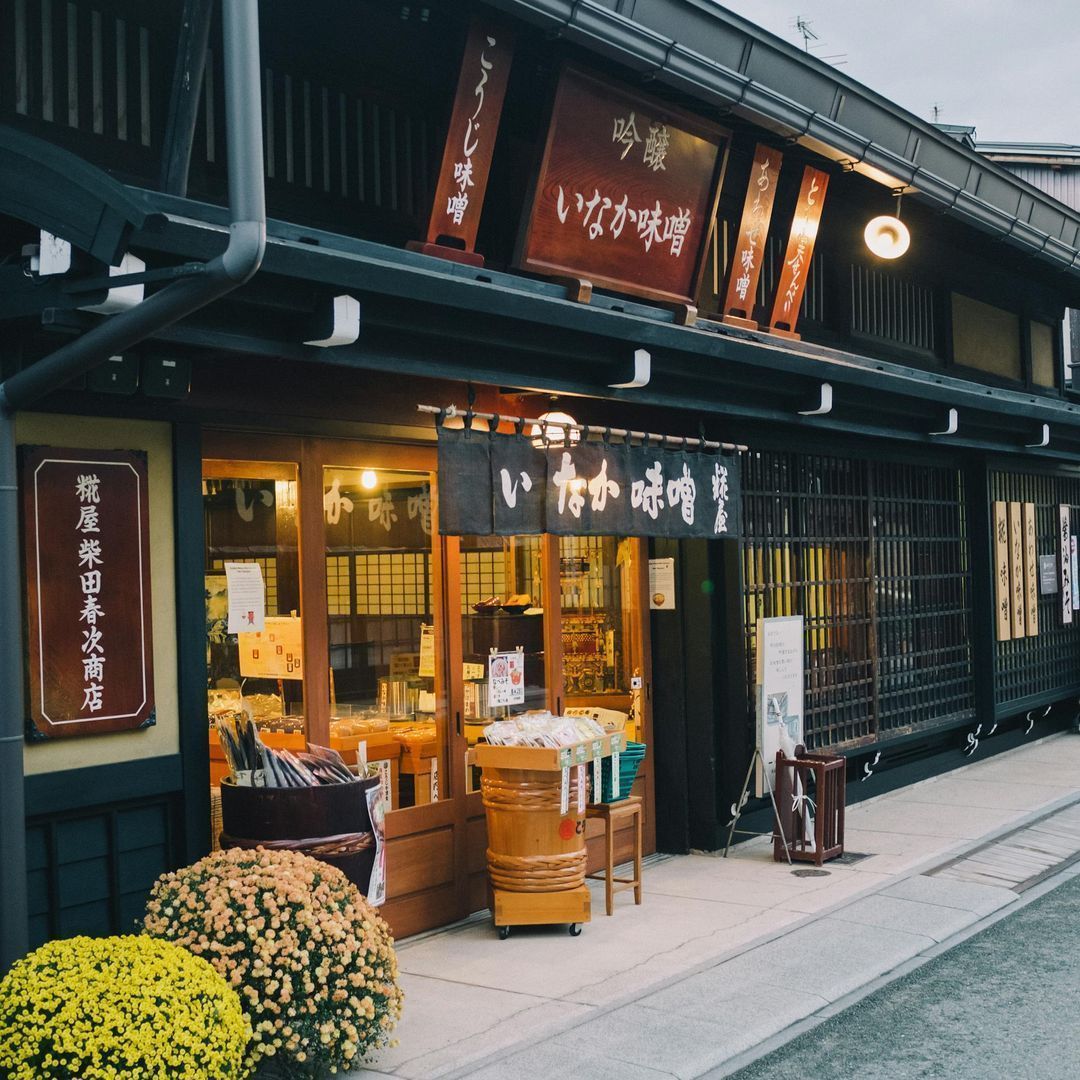
Over the past few decades, Japanese cuisine has undergone an extraordinary journey: from the streets of Tokyo and the quiet rural villages of Japan to restaurants and kitchens around the world. Its growth has been not just an explosion of popularity, but an example of how a millennia-old tradition can adapt, evolve, and conquer the world. Some dishes have been globalized, reinterpreted, and sometimes completely transformed, while others endure as bastions of Japanese culture and philosophy. But what makes Japanese cuisine so irresistible? And why is its impact so profound?
A culinary art rooted in culture
Japanese cuisine, or washoku (和食), was recognized by UNESCO as an Intangible Cultural Heritage of Humanity in 2013. This recognition is no coincidence: washoku is not just food, but an approach to life, rooted in respect for nature, seasonality, and the harmony of flavors. In Japan, every dish tells a story, and even the way it is served, arranged, and consumed has profound meaning. For example, the concept of itadakimasu (いただきます), said before eating, is a symbolic thank you not only for the food, but also for the hands that prepared it and the nature that made it possible. After the meal, one concludes with a gochisousama deshita (ごちそうさまでした), a gesture of gratitude to whoever served the food.
Japanese Dishes and Globalization
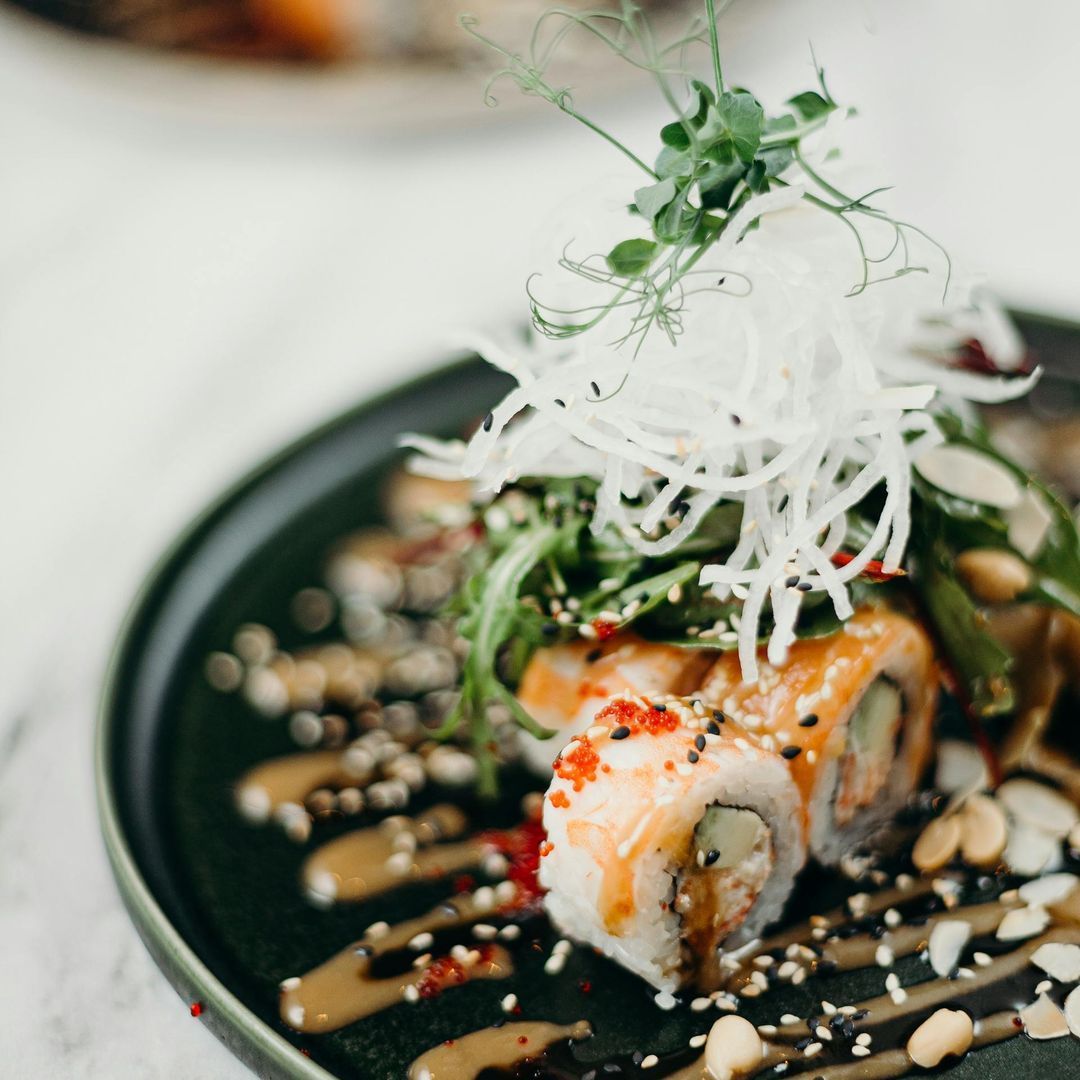
1 / 2 With such a deep cultural foundation, some Japanese dishes have become ambassadors of the country around the world. However, as they spread globally, many have been modified to suit local tastes.
Sushi
Probably the most well-known dish, sushi has been reinterpreted countless times. In Japan, sushi is a minimalist art, where the quality of the fish and the preparation of the rice (with just the right amount of vinegar) are everything. Around the world, however, sushi has taken on more creative and sometimes bizarre forms: the California Roll, for example, uses avocado and surimi, ingredients that are not part of Japanese tradition.
Ramen
This noodle soup has a fascinating history. Originally imported from China, ramen has become a symbol of Japanese culture. Today, each region of Japan has its own unique version, from the rich and thick broth of tonkotsu ramen (made with pork bones) to the lightness of shio ramen (salt-based). Globally, however, ramen has been enriched with fusion ingredients like Korean kimchi or fried chicken.
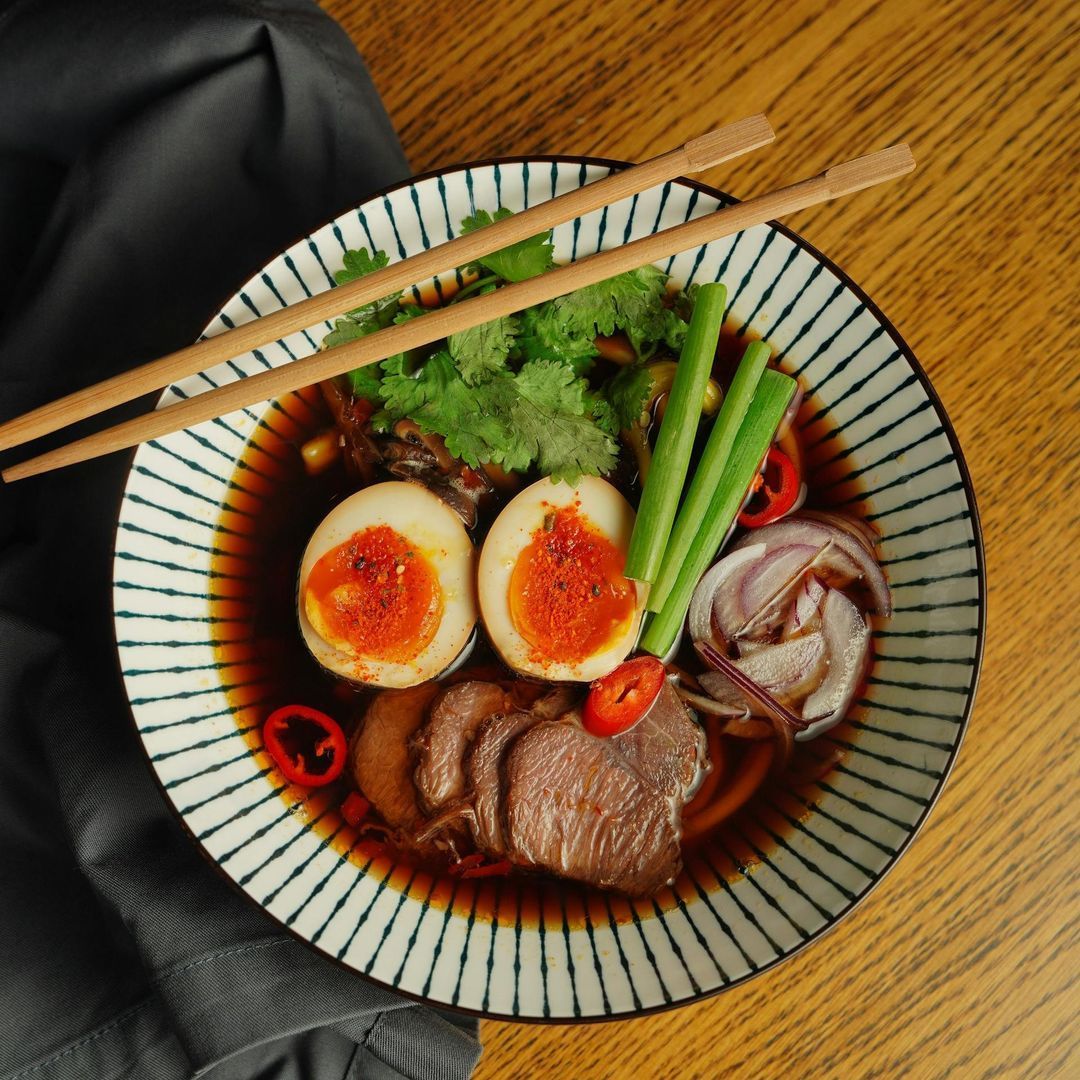
Shoyu Ramen
Il Shoyu Ramen è caratterizzato da un brodo a base di salsa di soia (shoyu in giapponese), che gli conferisce un colore ambrato e un sapore salato ma equilibrato, spesso arricchito da ingredienti come zenzero, aglio e mirin.
Tempo di preparazione
40 minutiTempo di cottura
1 ora e 15 minutiMarinatura
1 oraPorzioni
Chef StellatoDose
4Strumenti
Padella, PentolaIngredienti
Brodo (manzo)1500 mlManzo per arrosto300 gSalsa di soia150 mlMirin100 mlAcqua50 mlUova4 pz (240 g)Aglio2 spicchiCipolla dorata1 pz (150 g)Zenzero1 cucchiainoOlio di sesamo1 cucchiaioMisoq.b.1 In una pentola grande, scalda l'olio di sesamo e aggiungi lo zenzero, l'aglio e la cipolla tagliata a metà. Rosola a fuoco medio per qualche minuto fino a quando le verdure iniziano a dorarsi.
2 Aggiungi il brodo di pollo o manzo, 50 ml salsa di soia e 50 ml di mirin. Porta a ebollizione, quindi abbassa la fiamma e lascia sobbollire dolcemente per almeno 1 ora, per concentrare i sapori.
3 Se preferisci un sapore più ricco, aggiungi anche la pasta di miso. Durante la cottura, rimuovi le impurità che affiorano sulla superficie con un cucchiaio forato. Al termine, filtra il brodo per eliminare le verdure e tieni da parte.
4 Porta a ebollizione un pentolino con dell'acqua e cuoci le uova per 6 minuti e mezzo, per ottenere un tuorlo morbido e cremoso.
5 Raffredda immediatamente le uova in acqua fredda, sgusciale con attenzione e trasferiscile in una ciotola con salsa di soia, acqua e mirin. Lascia marinare per almeno 1 ora (puoi anche prepararle il giorno prima per un sapore più intenso).
6 Cuoci il controfiletto di manzo in acqua bollente per 10-15 minuti, fino a quando risulta cotto ma ancora tenero. Scolalo e lascialo raffreddare leggermente, poi affettalo sottilmente.
7 In una padella, scalda la salsa di soia con lo zucchero e un po' d'acqua. Aggiungi le fette di manzo e fai saltare per 1-2 minuti, in modo che la carne assorba il sapore della salsa.
8 Cuoci i noodles ramen seguendo le istruzioni riportate sulla confezione. Scolali e passali sotto l'acqua fredda per fermare la cottura.
9 In ogni ciotola, aggiungi i noodles cotti. Versa sopra il brodo caldo, in modo che copra completamente i noodles. Aggiungi sopra qualche fetta di manzo, metà uovo marinato, cipolla rossa, cipollotto e peperoncino a rondelle.
10 Completa con una manciata di coriandolo fresco e un tocco di olio piccante o peperoncino in polvere, se ti piace un sapore più deciso.
Tempura
This fried dish, introduced to Japan by Portuguese missionaries in the 16th century, has become an icon. While in Japan the batter is light and almost ethereal, in other parts of the world tempura is often prepared with heavier breading.
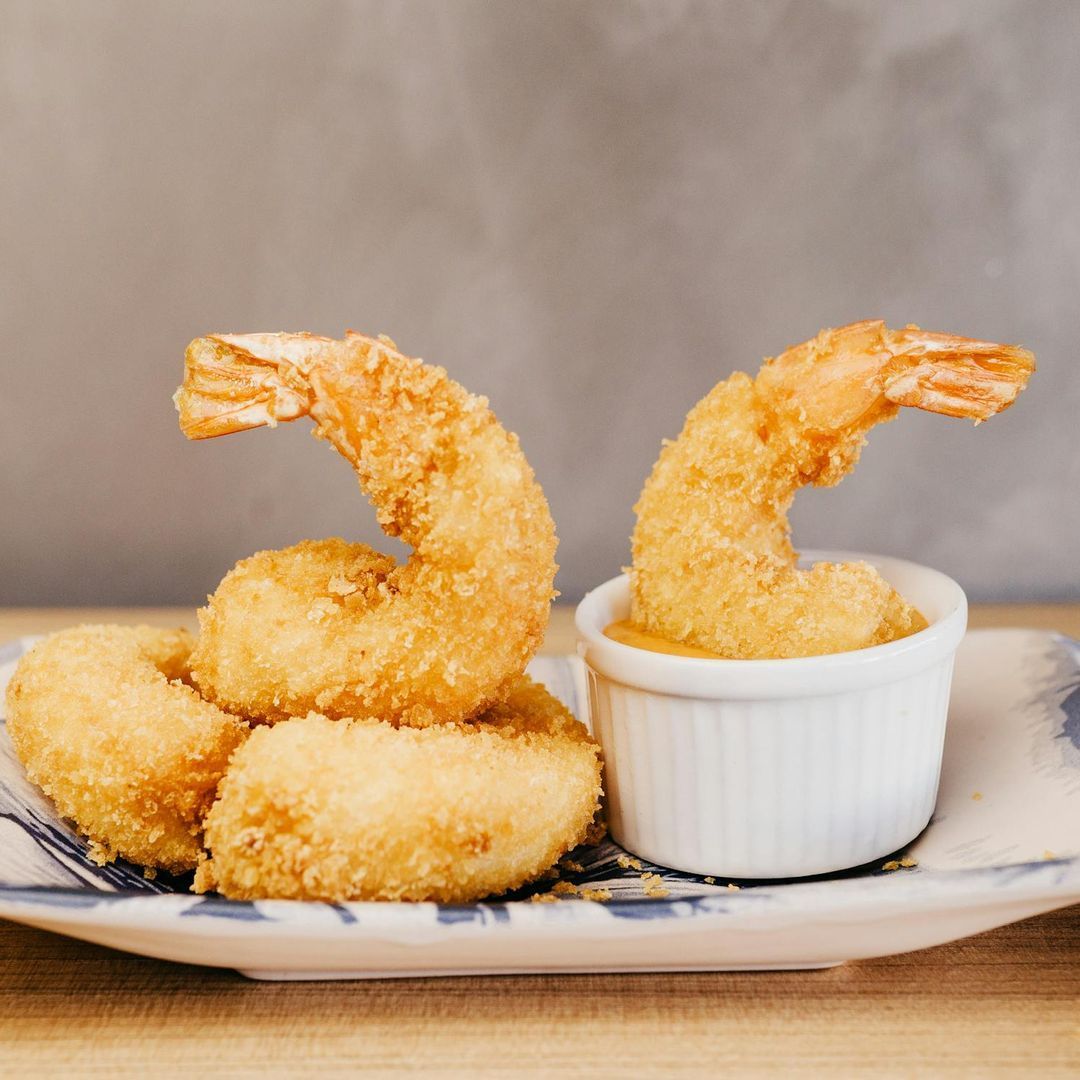
Tempura
Prelibatezza giapponese, croccante e leggera.
Tempo di preparazione
5 minutiTempo di cottura
10 minutiPorzioni
FacileDose
4Strumenti
PentolaIngredienti
Gamberi1000 gFarina per la tempura200 gAcqua1 tazzaLimoneq.b.Olio vegaleq.b.Sale fineq.b.1 Scalda abbondante olio vegetale in una pentola profonda fino a raggiungere una temperatura di circa 170-180°C
2 Nel frattempo, prepara la pastella per tempura. In una ciotola grande, mescola la farina per tempura con l'acqua fredda fino a ottenere una pastella liscia. Non mescolare troppo; alcuni grumi sono accettabili.
3 Intinge delicatamente le code di gambero nella pastella per tempura, assicurandoti di coprirle uniformemente.
4 Una volta che l'olio è caldo, friggi i gamberi in piccoli lotti per evitare di abbassare troppo la temperatura dell'olio. Cuoci i gamberi per 2-3 minuti o fino a quando sono dorati e croccanti. Usa una schiumarola per rimuovere i gamberi dalla pentola e adagiali su un piatto foderato con carta assorbente per eliminare l'eccesso di olio.
5 Ripeti il processo con i rimanenti gamberi. Aggiusta di sale, se necessario, e servi i gamberi in tempura caldi, magari accompagnandoli con fette di limone.
6 Goditi i tuoi deliziosi gamberi in tempura come antipasto o come piatto principale accompagnato da riso e verdure.
Katsu
Breaded cutlets, like tonkatsu (pork), are another example of cultural contamination. Although deeply rooted in Japanese cuisine, these preparations display Western influences, making them easily adopted globally.

Katsu Curry
Prova il Katsu Curry, il piatto giapponese con cotoletta di pollo croccante servita su riso e ricoperta da una salsa al curry densa e saporita. Un comfort food ricco di gusto.
Tempo di preparazione
15 minutiTempo di cottura
40 minutiPorzioni
MediaDose
4Strumenti
Padella, PentolaIngredienti
Brodo (pollo)750 mlPetto di pollo400 gRiso basmati400 gPangrattato20 gCurry3 cucchiaiSalsa di soia2 cucchiainiOlio vegale2 cucchiaiPatate gialle2 pz (400 g)Uova2 pz (120 g)Carota2 pz (150 g)Cipolla dorata2 pz (300 g)Zucchero semolatoq.b.Olio di arachideq.b.Sale fineq.b.Farina tipo 0q.b.1 Prepara il Katsu: Appiattisci leggermente i petti di pollo o maiale con un batticarne e condiscili con sale e pepe. Passali nella farina, poi nelle uova sbattute e infine nel pangrattato. Friggili in olio vegetale caldo fino a quando sono dorati e croccanti su entrambi i lati. Scola su carta assorbente per eliminare l'eccesso di olio.
2 Prepara il Curry: In una pentola grande, scalda l'olio vegetale e cuoci le cipolle finché sono morbide e traslucide. Aggiungi le carote e le patate e continua a cuocere per alcuni minuti.
3 Aggiungi il curry in polvere e mescola bene con le verdure. Versa il brodo di pollo o vegetale e porta a ebollizione. Riduci il fuoco e lascia sobbollire il curry per circa 20-25 minuti, o finché le verdure sono morbide e il curry ha raggiunto una consistenza densa.
4 Aggiusta di sale, pepe, zucchero e salsa di soia, se desiderato, per bilanciare i sapori. Servi il Katsu Curry caldo sopra il riso giapponese appena preparato.
Dishes That Resist Globalization
Despite global popularity, there are dishes that remain closely tied to their Japanese roots and are difficult to find outside the country.
Kaiseki
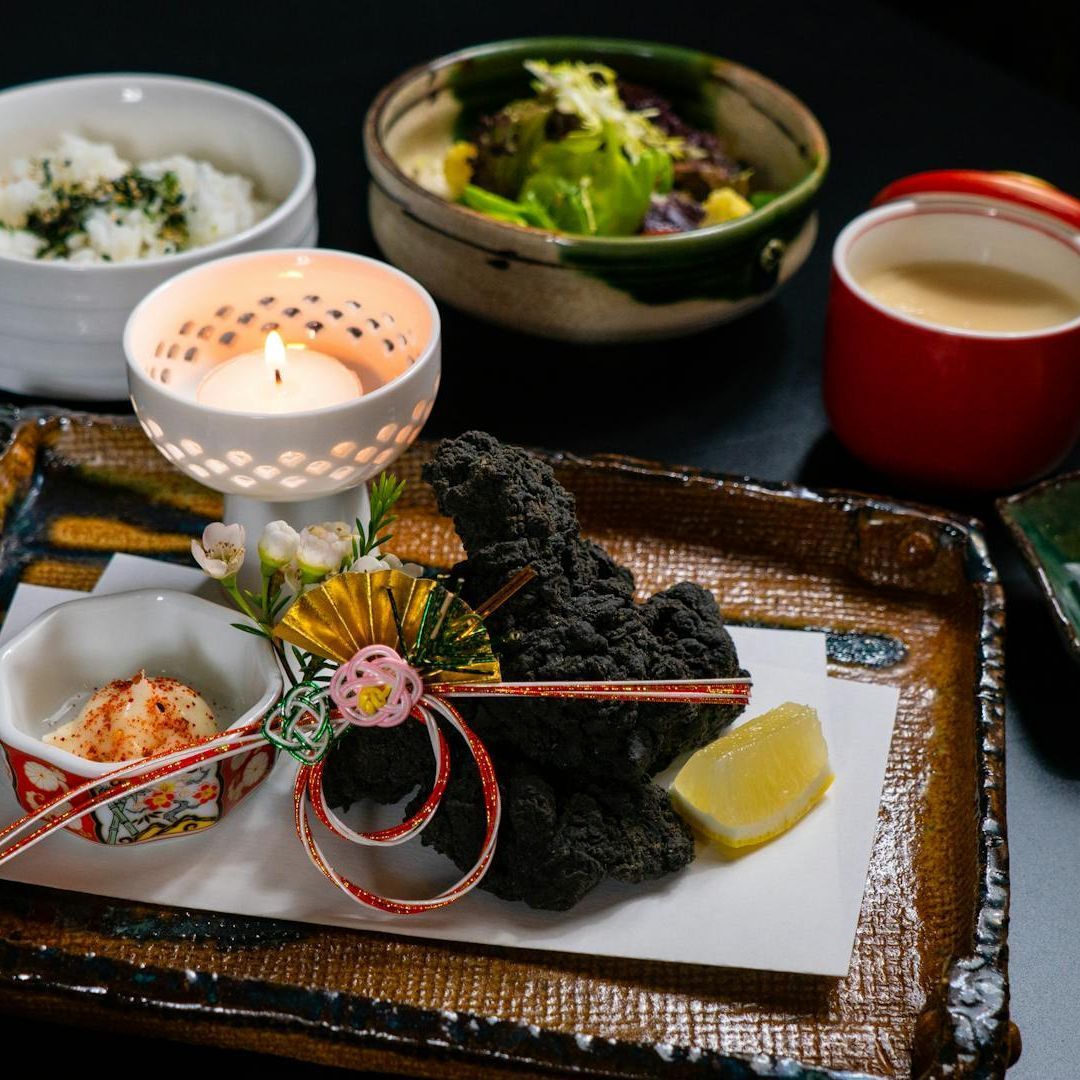
More than a meal, its an artistic experience. Each dish is served in precise order, reflecting seasonality and Japanese aesthetics. This culinary style requires a profound knowledge and connection with nature and is difficult to replicate outside of Japan.
Shojin Ryori (Vegetarian cuisine)
Buddhist vegetarian cuisine, characterized by simple ingredients and pure preparations, respects the philosophy of avoiding waste and violence towards living beings.
Natto
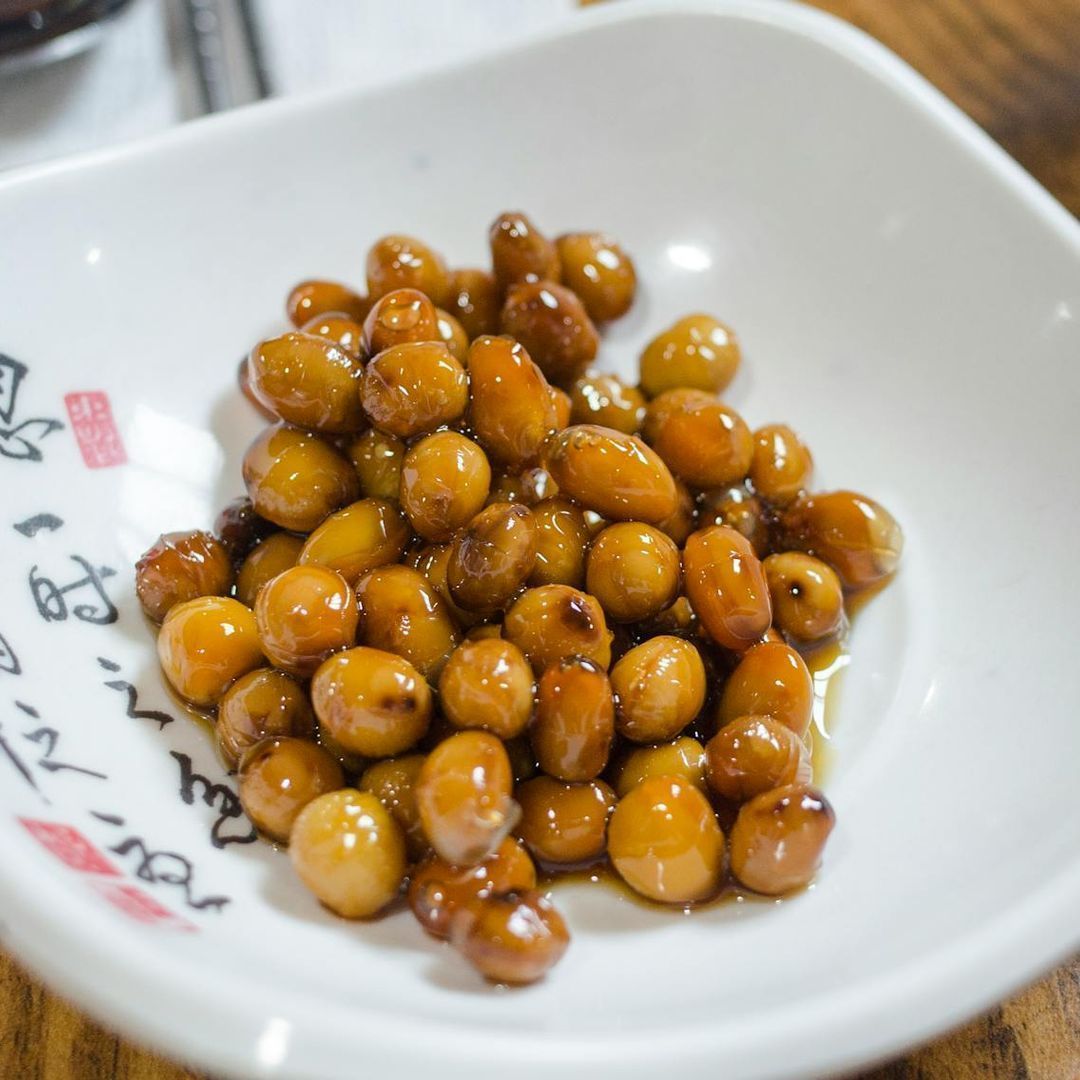
This fermented food, rich in probiotics, divides opinion even in Japan due to its intense flavor and sticky texture. Its a perfect example of authentic, uncompromised taste.
Why is Japanese Cuisine So Influential?
The global success of Japanese cuisine can be attributed to several factors
Aesthetics and Philosophy
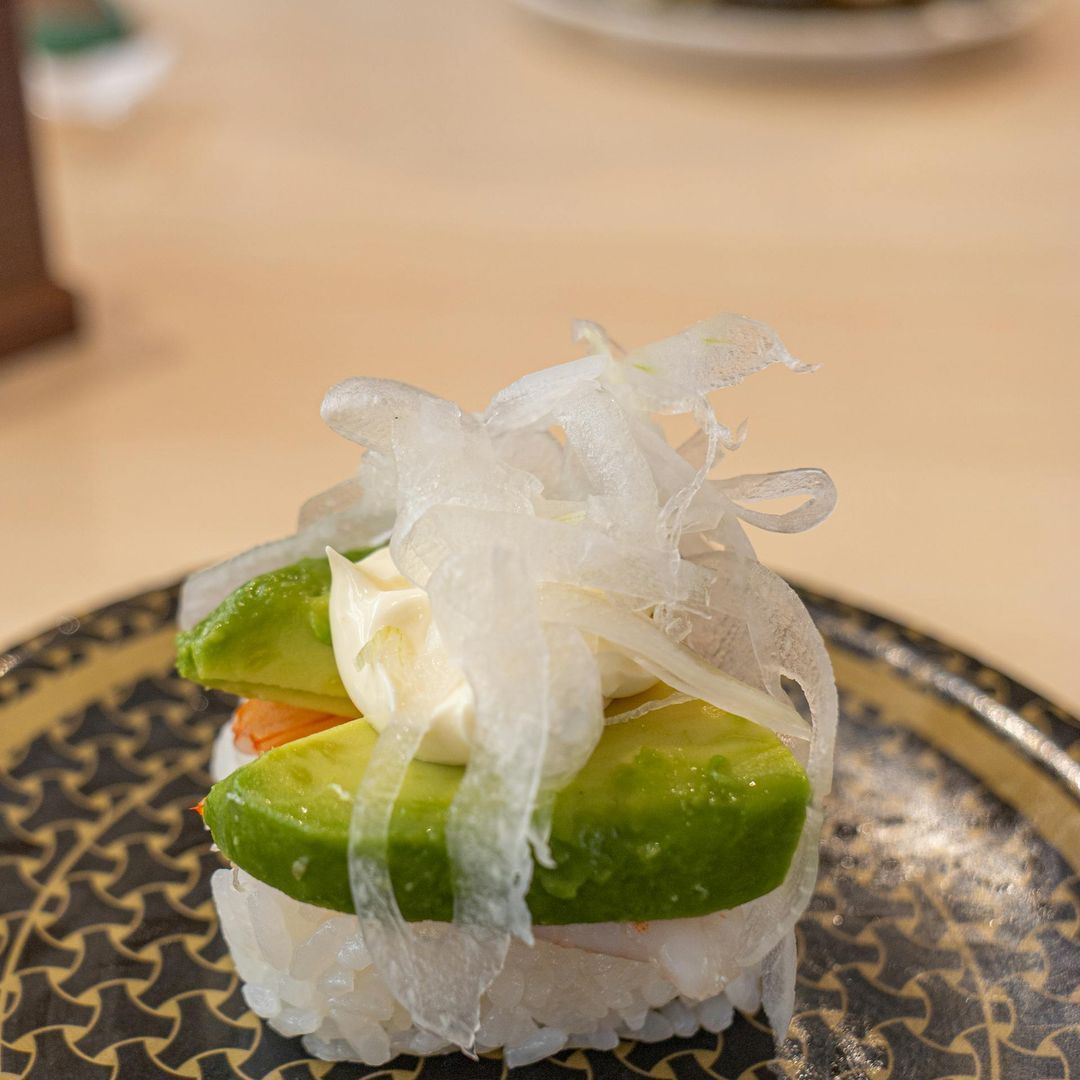
Attention to detail, harmonious presentation, and a philosophy of balance make Japanese cuisine a visual and gustatory art.
Adaptability
Many Japanese dishes, such as sushi or ramen, are versatile and easily reinterpreted, making them popular across cultures.
Japanese Soft Power
Anime, movies, and manga have played a crucial role in bringing Japanese culture (and its dishes) to the worlds attention.
Health and Wellness
Japanese cuisine is often perceived as healthy, thanks to its use of fresh fish, vegetables, and light cooking methods.
Economic Expansion
Japan has invested in promoting its cuisine, making ingredients and techniques increasingly accessible in global markets.
Linguistic Curiosities

Ramen comes from the Chinese word lamian (拉麺), meaning pulled noodles. Tempura has roots in the Portuguese word tempero, meaning seasoning. Sashimi (刺身) literally means sliced meat, referring to the precision of the cut.
Conclusion
Japanese cuisine is much more than a trend: its a celebration of culture, nature, and creativity. Its ability to adapt while preserving its roots makes it unique. And while some dishes evolve to conquer global tastes, others remain rooted in tradition, reminding us that food is not just nourishment, but also a universal language of culture and connection.

gourmet
Data di inserimento 29 nov 2024
Report article

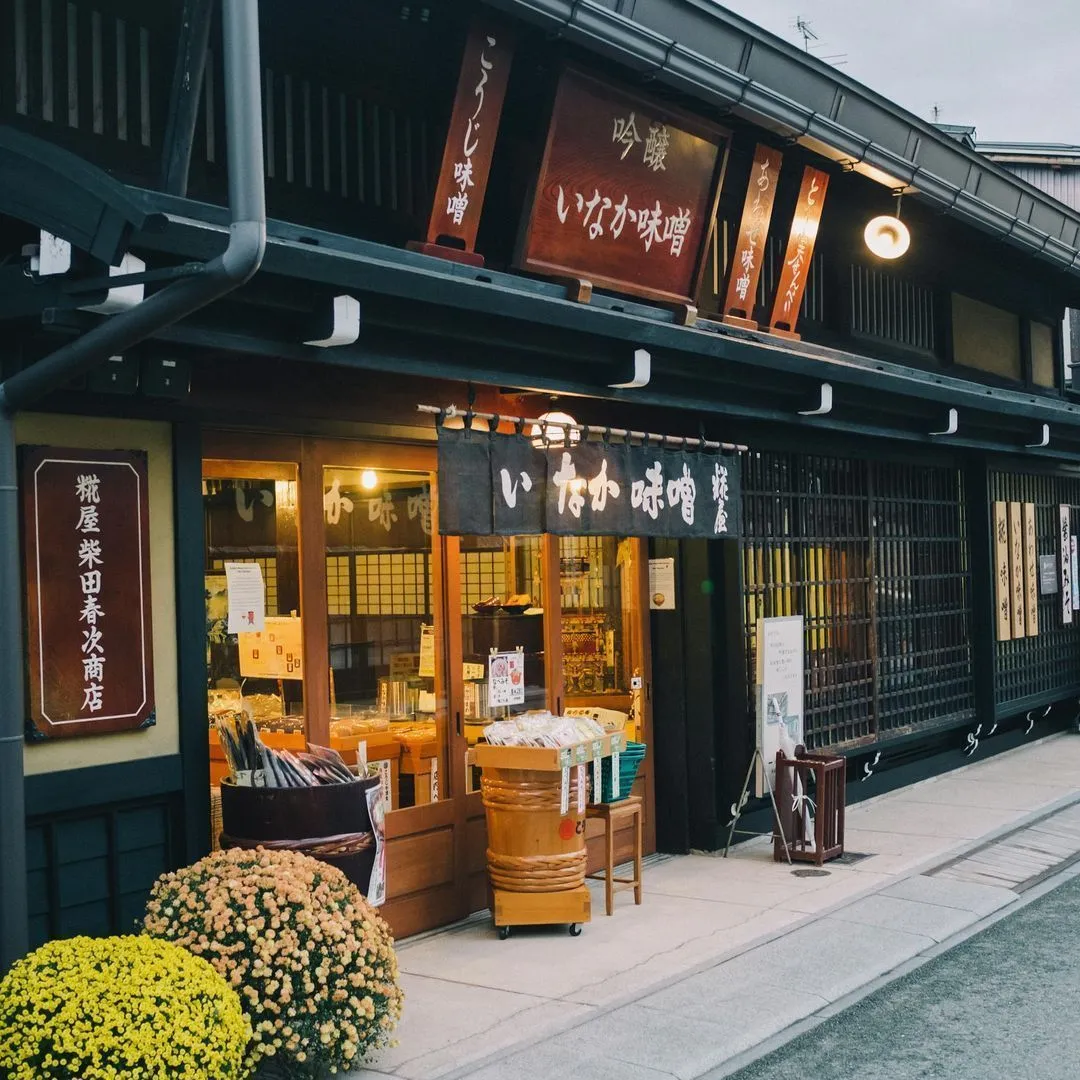
Comments
There are no comments yet.